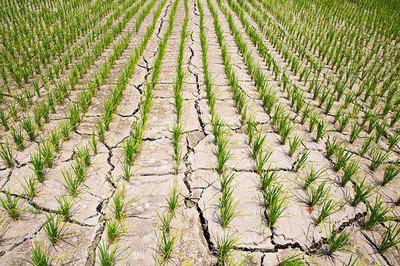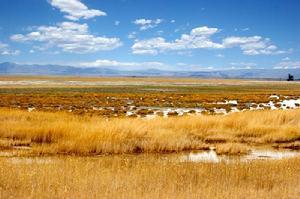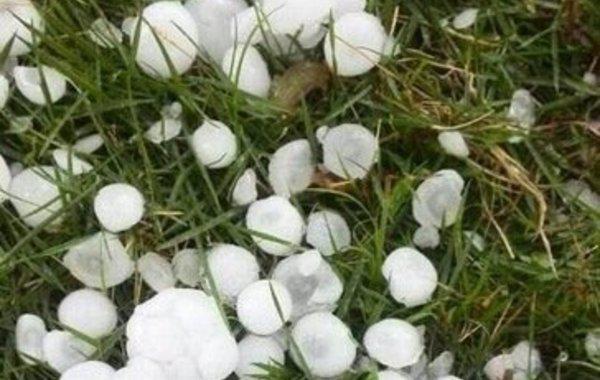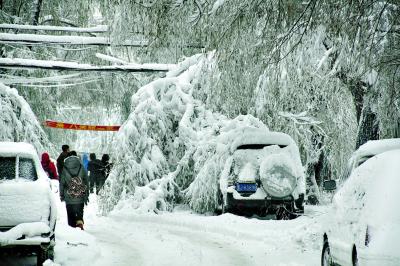Droughts are the most serious disasters in Northeast China, mainly due to the high temperature and the insufficiency of precipitation, and partly due to the poor quality of water.
The agriculture area
Agricultural drought disaster refers to the reduction in crops'output due to the water requirement of their growth period is not satisfied.
The spring drought results in less or even no germination of the seedling. The summer drought leads to the insufficient growth of crops. The autumn drought affects the earing and filling of crops, causing the insufficiently filling of the grains.

The drought in Northeast China is mainly concentrated in the central and western regions, with the most prominent of the 4 provinces (cities) in western Liaoning and Inner Mongolia, followed by the western provinces of Liaoning and Kyrgyzstan, and the western Qigihar region of Heilongjiang Province.
The pasturing area
Drought disaster in pastoral areas refers to the disasters caused by water shortage in pastoral areas. The spring drought affects the herbage turning green and seedling. The summer drought affects the growth of herbage. These 2 types of droughts are called the drought during growing period. The lack of snow in winter affects the watering for animals, which is called the "black calamity".The drought in the pastoral areas of Northeast China is mainly concentrated in the pastoral areas of Inner Mongolia.

The urban area
Due to the lack of water resources and lack of water supply projects, the cities in Northeast China are generally lacking of water. This will affect the economic development and the lives of the residents, resulting in urban groundwater overdraft and lead to further damage- the deterioration of environment and seizing agricultural water of the city. There are 32 water shortages cities in 33 key cities in Northeast China. The largest water shortage occurs in Shenyang and Dalian. The highest water shortage rates are of Fuxin, Jinzhou and Dalian.
The rural area
There is a wide-range and great lack of drinking water for people and livestock in the rural area of Northeast China. The reasons for it can be divided into 2 types: water shortage and poor water quality. According to the statistics in 1990, the lack of water affected more than 24 million people's lives.
The water shortage type includes aridness in the west regions, soil and water loss in the eastern hilly areas, and geological water shortage in the southern coastal areas.
The poor water quality type includes the fluorosis caused by high intensity of fluoride, endemic goiter caused by iodine deficiency type water (endemic type), endemic cardiomyopathy and KBD.
Fluoride is mainly distributed in some midwest lowlands, the goiter mainly in mountainous areas, endemic cardiomyopathy mainly in 67 counties (city) of Heilongjiang Province, partly in Liaoning, Jilin province and the hilly area of Inner Mongolia Dongsimeng city and KBD mainly in hilly areas.
There are some other disasters that can be classified into the category of flood and drought disasters in Northeast China: water and soil loss, hail disaster and snow disaster.
Water and soil loss
The soil and water loss in Northeast China is mainly caused by water erosion. Besides, there is still wind erosion area in the west of this area, which is a regional disaster that must be paid great attention to. Soil erosion and destruction of vegetation and ecological environment in mountain areas, affect the local agricultural production and the development of rural economy and increase the possibility of flash floods. The erosion of sediment makes the rivers and reservoirs silt up, and reduce the flood control effect of the river channel and the project. In addition, the topsoil and organic matter loss of the slope land reduces the fertility of the land and seriously affects the output of grain and other crops.

Hail disasters
Hail disasters occur throughout the Northeast China, results in a significant loss of hail area due to the hail hit. And sometimes it associates with floods and cyclone in a small area.
In June 20, 1998, a twenty-minute hail storm affected 35000 hectares of crops in 10 towns; killed 18000 hectares of crops, 358 people, 111 livestock and nearly 40,000 poultry; destroyed more than 14000 houses, some of the buildings and facilities of highway bridges and culverts; and caused a direct loss of more than 200 million RMB.

Snow disaster
The snow in the northeast region is mainly manifested in two aspects: one is called "white disaste", the effect of the storm on the animal husbandry, scattering the herds and covering the herbage which result in the loss of herds. And the two may lead to a short-term disruption of the highway, railway and shipping traffic.

Comment list ( 0 )
